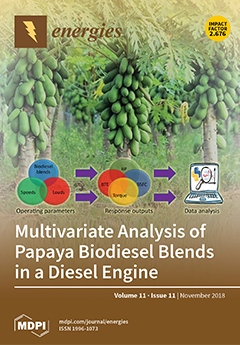Open AccessArticle
Spatial Heterogeneous Characteristics of Ridesharing in Beijing–Tianjin–Hebei Region of China
by
Ye Ma 1,2,3,4,5,6, Biying Yu 1,2,3,5,7,* and Meimei Xue 1,2,3,5
1
Center for Energy and Environment Policy Research, Beijing Institute of Technology, Beijing 100181, China
2
BIT @ Didi Joint Laboratory of Sharing Economy and Behavior-Energy, Beijing 100081, China
3
School of Management and Economics, Beijing Institute of Technology, Beijing 100181, China
4
Collaborative Innovation Center of Electric Vehicles in Beijing, Beijing 100081, China
5
Beijing Key Lab of Energy Economics and Environmental Management, Beijing 100081, China
6
Dyson School of Applied Economics and Management, Cornell University, Ithaca, NY 14853, USA
7
Sustainable Development Research Institute for Economy and Society of Beijing, Beijing 100081, China
Cited by 10 | Viewed by 4434
Abstract
Ridesharing is becoming popular in many cities in China where transportation alternatives are easily accessible. Individuals typically access services by smartphone app developed by ridesharing company to join a trip offered by other private vehicle’s drivers who share same or geographically close destination.
[...] Read more.
Ridesharing is becoming popular in many cities in China where transportation alternatives are easily accessible. Individuals typically access services by smartphone app developed by ridesharing company to join a trip offered by other private vehicle’s drivers who share same or geographically close destination. However, there are some internal differences within this region indicating the service heterogeneity of ridesharing. In order to discover this regional heterogeneity, this paper chooses Beijing–Tianjin–Hebei (BTH) region as research target and uses BTH regional ridesharing data provided by DiDi Chuxing Company. Then, this paper conducts an in-depth study by summarizing the travel pattern characteristics and evaluating the environmental impacts that result from individuals participating in ridesharing services. Lifecycle analysis of fuel and environmental input–output are applied to estimate the direct and indirect environmental impact separately. The results reveal heterogeneous spatial heterogeneous of ridesharing, including travel pattern and environmental influence caused by service demand and supply, which results from the unbalance of regional development and infrastructure construction condition of the transportation system, and other travel behavior differences.
Full article
►▼
Show Figures





